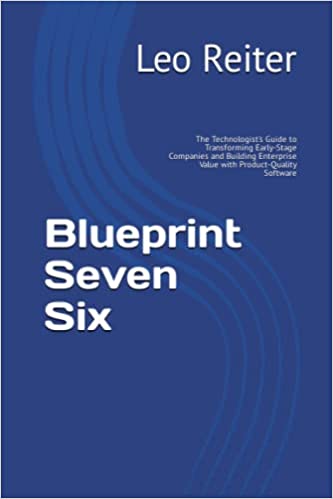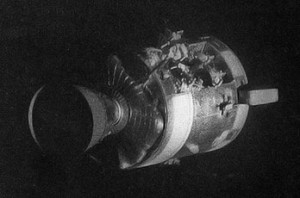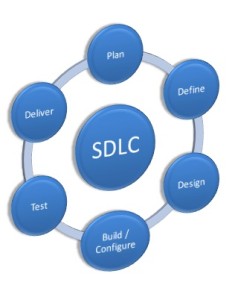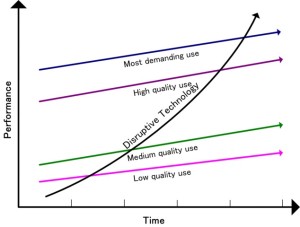 I am not an economist, a futurist, nor a Silicon Valley mogul. But like many, I’ve given a lot of thought to our present and future as largely shaped by labor automation and increasingly, artificial intelligence.
I am not an economist, a futurist, nor a Silicon Valley mogul. But like many, I’ve given a lot of thought to our present and future as largely shaped by labor automation and increasingly, artificial intelligence.
Despite everything we understand about macroeconomics and economic equilibrium, particularly in free market societies, the anxiety around technology displacing human labor is real and should not be dismissed as irrational. Yes, economic shifts happen regularly – it’s why I personally have no clue how to grow wheat, but I can program computers to teach themselves to think. It doesn’t matter if my skills are higher or lower than my ancestors’, what matters is that I live in a different world than they did. And in turn, their ancestors lived in a very different one to them as well. If you accept that we are fundamentally no more intelligent than Cro-Magnons were, then wouldn’t that make our modern skills more about circumstance than ingenuity? Well no, and here’s why…
Despite all the genius and productivity we enjoy today, we work much harder than our prehistoric ancestors did. I don’t have hard evidence for this (and I don’t know that anyone really does) but we do know that even pre-industrial workers had a shorter workweek than today’s. And it’s not just productive work that burdens us. Beyond providing for our basic needs, we spend time planning even recreation, and everything in between. Much of what we deal with is self-inflicted, but again, that’s the reality of the world we live in. If we work more than our ancestors did, was there ever a time when that wasn’t the case?
The Biggest Breakthrough in Human History Well Predates Automation
I firmly believe that if there is one compelling event in all of human history that matters, it’s when we learned how to create fire. One can point to dozens of other things, ranging from the wheel, to vaccination, to internal combustion, and so on. But the one thing that our modern world demands more than anything else is the control and distribution of energy, and the very first step was actually starting a fire at our discretion. It lit our world, it killed harmful bacteria, it helped us become apex predators, etc., etc. Before fire we spent our days finding food and simply surviving, and our nights huddled in fear under what little moonlight there was, hiding from the horrors of the dark. We had neither production nor security, and certainly not much time to actually think. But as advanced as we are today, we are fundamentally still using combustion to make our world (and beyond) function, and therefore, we should take a moment to thank our distant ancestors for giving us the gift of fire.
So what would we do with time to think? Well let’s start with what’s happened since fire. We invented or discovered the wheel, tools, physics, art, medicine, literature, government, transportation, and technology – in a nutshell, civilization. But inevitably, we’ve slowed down our ingenuity as a result of diverting brain space to deal with our own creations. Are smartphones as big of an invention as radio? I don’t think so, they are simply an application. The same can be said for just about everything else. At the time of this writing Elon Musk just launched his electric car into space. Both the car and the chemical rocket it rode on are effectively powered by combustion. You can see the fire coming from the rocket, and the car plugs into a grid that delivers electricity largely originating from some sort of fire. Despite the amazing things I’ve seen even in my short-ish lifetime, I quickly realize they’re simply recycled ideas put into practice because circumstances made them more feasible (such as cheaper materials, more widespread knowledge, etc.).
What needs to happen for us to have time to think again? For us to invent what we cannot even envision, and change humanity as much as the discovery of harnessing fire did? Let’s go back to the anxiety about technology automating away our livelihood…
Automation of Production
First, let’s divide production into 3 classes of labor: unskilled, skilled, and highly skilled. This leaves out anyone who doesn’t actually produce, even indirectly, because that’s a different conversation. But if you participate in economic production in any way, even if you are an investor who facilitates others to do it, you fit into one of these classes. This has nothing to do with means – you could have inherited billions of dollars but have no skills to speak of, or you could be homeless and understand how quantum entanglement works. It’s about what you produce, not how “successful” you are. It’s true that we tend to see examples of higher means as we progress from unskilled to highly skilled, but let’s not define these classes by socioeconomic standards. Also, let’s think purely in the context of free markets, because feudalism and socialism do not deserve further consideration. These systems failed those who tried them repeatedly, and any full implementation demands suspension of human rights first. I’m sorry, but I’m not interested in that.
Unskilled labor is 100% automatable with iterative machines and processes. Stamping a shipping label on a box as it comes off an assembly line does not require any real decision making – it just has to be done over and over again. It’s very difficult to make mistakes assuming the process is correct, unless the operator (human or otherwise) is simply negligent or in disrepair. I believe this class of labor is more or less finished for humans. It is true that automation is not free, and there is a large implementation cost, but the writing is on the wall. Any forward-looking company, realizes that they must automate unskilled labor in order to remain competitive because, well, their competition will offer the same class of products/services at lower costs as a result. Specialty firms may be an exception, but I think of that as art rather than sustainable economic production at scale.
Displacing unskilled labor inevitably increases demand of skilled labor. If machines automate assembly lines, someone has to maintain and operate the machines. While understanding how to monitor sensors and adjust settings on a control panel may not be highly skilled labor these days, it’s certainly not something you can delegate to a worker with absolutely no training. By definition it’s skilled labor – whether those skills are developed or acquired. There is an additional pull for highly skilled labor to actually design and build the machines, but that’s a further derivative and not the immediate labor shift that occurs from automating in the first place. It goes without saying that if we are not teaching our children even the most basic of vocational skills, we must start now. Workers who know absolutely nothing are simply not employable, unless the employer decides to invest in them. But almost certainly that investment is higher than that of implementing automation, at scale, and therefore not something likely to happen for very much longer. It’s time that our liberal arts curriculums started to incorporate some basic vocational training if we expect to send inexperienced labor into the workforce successfully. Not everyone can be a doctor, an engineer, or a teacher. But since unskilled jobs won’t exist, we need to train more technicians. The good news is that our children already have basic abilities with advanced technology almost from birth, so it’s just a matter of applying these into marketable skills. Let’s start now so we don’t end up with complete a labor crisis in 10-20 years once the first wave of industrial automation is in full effect. In addition to learning cursive, our children should be learning how to inspect basic health of computer networks, etc.
That brings us to the second step of automation – displacement of skilled labor. These are the decision makers within a given system, or in other words, the technicians that we just trained. The good news is that this probably won’t happen any time soon. In fact it may take a generation before it threatens labor the way basic automation is today. The bad news is that we already have the technology, and it’s starting to move from the experimental phase into production. We can think of this as artificial intelligence, but more broadly, cognitive technology – machines that can learn and improve themselves and their systems over time. For example, the technician inspecting a computer network decides how to fix it when it breaks – change routing, deprecate service, etc. We have decision support systems today that can help those technicians by recommending the appropriate action based on analyzing all the variables at stake. It would not be a huge leap for those systems to go from recommending to acting. If we limited this to the scope of the system they have influence over, this would effectively automate away the need for skilled labor without (yet) threatening highly skilled labor. Please understand that this is not new technology and has already been implemented repeatedly. What keeps humans in control in many cases boils down to the ability to make decisions when logic breaks down – in other words, our ability to apply judgement and weigh outcomes ethically as well as logically. There is also a huge debate over accountability of automated systems – if something goes terribly wrong, who do you blame? A fundamental aspect of justice in modern society is accountability, and indemnifying decision making is not part of that equation. But since you can’t put a machine on trial and subsequently in jail, it really complicates this matter. A human operator is the ethical security blanket we cling to like Linus of Peanuts fame, despite having the technology to do away with that in most cases. But, even this will succumb to economic pressure over time, especially when we face the hard reality that humans are far more likely to make mistakes than well programmed machines. Machines don’t get tired, moody, angry, bored, or distracted – they fail only when their system breaks somehow. Humans fail constantly even when their systems are in prefect health. But just like skilled labor designs and builds machines for automating unskilled workers, highly skilled labor creates the algorithms to displace skilled workers. Today’s technicians must become tomorrow’s data scientists in order to survive and thrive, because that labor shift will complete before we know it.
Can Automation Yield to Equilibrium?
Here’s where it gets very interesting. Of course, you can argue that any time something hits really close to home, it suddenly becomes interesting. But that’s not the only reason why it’s interesting. I had a long conversation with my brother, a fellow technology professional, which inspired me to write this essay. One of the things he reminded me of, and rightfully so, is that economies always seek equilibrium. If we assume that unskilled labor is finished and we train lots of skilled workers, what happens when their jobs no longer exist because machines now make industrial decisions? My brother thinks we will see a migration from cities and metroplexes to small communities and local economies. As the price of products races to 0, limited only by the raw material cost, companies still need consumers to buy them. If those consumers don’t have jobs, they can’t buy products. Remember the specialty players I mentioned above and categorized as art? While they can’t contribute to economic production at scale, they can certainly help at the local community level. A local economy may look a lot like the macro economy does today, with more people than machines at the helm. While this doesn’t scale, it definitely works. A local community may have a PC repair shop, a restaurant, a sustainable clothing company, and a health clinic. It may have a grocery store that sources produce from local farms. And so on. The doctor at the clinic may not drive a Rolls Royce, and the PC repairman doesn’t buy a new smartphone every year, but this type of economy can be sustainable if people commit to supporting it. In fact I would argue it’s a good thing if people didn’t toss perfectly good products in order to buy the latest ones. While it may look like a regression for industrial elitists, it’s a good outcome for those who would otherwise be left behind as skilled labor suffers the same fate as unskilled labor at large scale. And more than likely, people living and working in these small communities would regularly go online to buy products from major industrial firms that are fully automated. It’s a win-win. As long as those communities put an emphasis on education, and teach children how to think rather than recite, there’s a good path to producing highly skilled workers to send back into the macro economy. You can think of local economies as a “soft landing spot”, but actually, they may be more sustainable than we realize. And quite frankly, some of us may decide to live and work there by choice.
Logical Automation, Gone Terribly Wrong
Back to the other interesting part: what happens to highly skilled labor? Cognitive algorithms that are 100% in charge of localized systems will one day extend to having control over broader ones. They may even make decisions that have little to do with their immediate problems at hand. For example, in the distant future, if we have a crew of humans on a space journey with a cognitive system operating the ship, the most obvious thing for the cognitive system to do to conserve resource is to jettison the humans. They take up way too much space, consume too much energy, and produce too much waste. The ship can reach its destination with much less hassle and accomplish its mission if the computer just opens the airlock and disposes of the carbon units inside – a perfectly logical but terribly horrific decision that inspires countless science fiction stories.
Over a dinner conversation the other night I heard a story about sensors that feed cognitive algorithms which in turn make unsupervised decisions after analyzing the data. I immediately said “that’s SkyNet” (of The Terminator fame) – because it is. The truth of the matter is that highly skilled labor will put the brakes on fully unsupervised cognitive systems by building artificial barriers and protections – for example, the computer on that space ship may be able to regulate the temperature inside but not outside the range that a human can tolerate – at least not without a human overriding the safety system (yes I just described another inspiration for countless science fiction stories!). It’s not that we don’t trust logic, it’s that we are fearful creatures. Fear, along with necessity, is a fiercely motivating force – especially when survival is at stake. I firmly believe we will build artificially intelligent systems engaging in unsupervised learning in the very near future – we have the technology right now. I do not believe we would just walk away and let them do their thing. At least not in our lifetime. The academic interest in cognitive systems alone is too great, nevermind our fear of a nightmarish future of machine control. As far as I can imagine, there will always be humans keeping tabs on their artificially intelligent algorithmic creations, whether for mere curiosity or outright protection of the species.
So that brings us to the other form of equilibrium – the one that occurs from expanding the possibilities rather than striking a balance with the current ones. And for that, we need to think about rubbing two sticks together and making a spark again. That spark today is artificial intelligence rather than fire – and while it’s way too early to tell if it will have anywhere near the significance that fire did (and it probably won’t), it bring us similar results.
Where Will Automation and AI Take Us Next?
I gave a talk at a conference a couple of years ago where I spoke of “the future of the 1960’s” versus the actual state of technology today. I used the example of the HAL 9000 computer in 2001: A Space Odyssey as the epitome of futurism in the 1950’s and 1960’s – a machine that can pass the Turing Test, or in other words, trick you into thinking you’re interacting with a human. We believed at one time that this would mark the inflection point where machines actually became intelligent, and would then live among us as citizens and interact with us as ordinary humans would. What I see today with regards to artificial intelligence could not be more different, but makes absolutely perfect sense. We don’t want to be tricked – if we want to talk to a human, we talk to humans. We don’t need machines to live undetected amongst us. We’re not even ready for the ethics of non-human intelligence – its rules, its rights, its feelings, etc. – and frankly it doesn’t matter because it’s not happening. Instead, machines augment our abilities by providing contextual information derived from constant cognitive processing of our daily events. This is the future of the 2010’s at least. When we land in a new city, our phone recommends a restaurant across the street from the airport that we might like. When a meeting runs long, our calendar reminds us that it will take us 30 minutes to travel to the next one, and that we should leave now. Yes skilled labor is displaced but what it’s doing is boosting the capacity of highly skilled labor to invent. We don’t need to think about many things anymore, but we’re still in charge. In other words, we lit fire for the first time, and when we’re done hunting and gathering for the day, we can relax and think about what comes next rather than how we’re going to survive the cold, dark night.
Just like we are still burning things to this day, we’re still using the binary system for the basis of our technology. We’re still moving from point A to point B rather than moving point B to us. We’re still interacting with analog interfaces even in our newest digital devices, rather than just thinking about things and having them happen. And so on. We have so much to invent. We can easily squander it by making ourselves even busier now that machines do a lot of our work. But I believe that as we automate away that which can be automated, some of us will accidentally strike sparks that will take us to the stars, and more importantly, to whatever comes next. Let automation happen, embrace it, help those temporarily left behind, but proceed fearlessly into the future because just like our cave dwelling ancestors who lit the first fires, we’re just getting started.


 I am not an economist, a futurist, nor a Silicon Valley mogul. But like many, I’ve given a lot of thought to our present and future as largely shaped by labor automation and increasingly, artificial intelligence.
I am not an economist, a futurist, nor a Silicon Valley mogul. But like many, I’ve given a lot of thought to our present and future as largely shaped by labor automation and increasingly, artificial intelligence.









